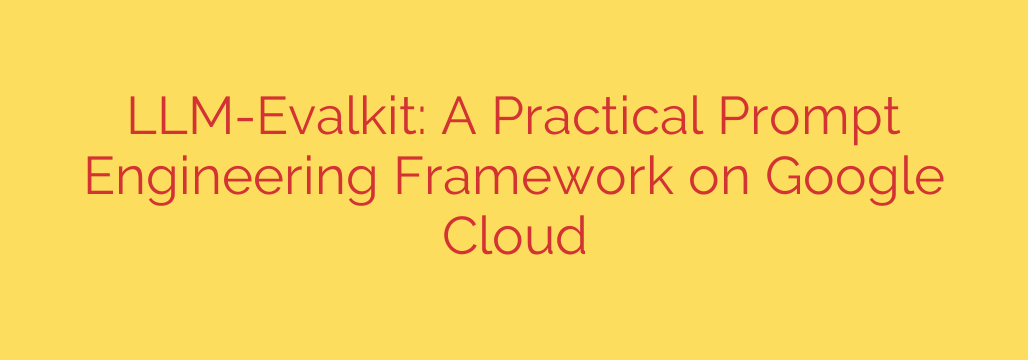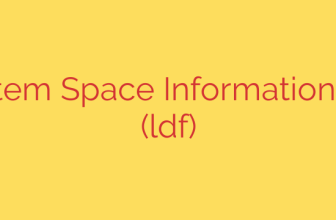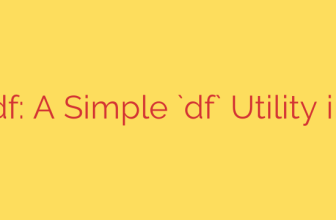
Unlock Better LLM Performance: A Deep Dive into a Powerful Prompt Engineering Framework
The world of Large Language Models (LLMs) is moving at an incredible pace. While developers are quickly building amazing applications, a critical challenge remains: how do you systematically measure and improve the performance of your models? Simply “eyeballing” a few responses isn’t enough for production-grade systems. Success requires a structured, data-driven approach to prompt engineering and model evaluation.
This is where a dedicated evaluation framework becomes not just a nice-to-have, but an essential part of the modern AI development toolkit. By moving from ad-hoc testing to a repeatable, scientific process, teams can make informed decisions, accelerate development cycles, and ultimately build more reliable and cost-effective AI solutions.
The Core Challenge: Moving Beyond Guesswork in LLM Evaluation
Anyone who has worked with LLMs knows that prompt engineering is more of an art than a science. A slight change in wording can drastically alter the output’s quality, tone, and accuracy. The problem is magnified when you need to compare different models—like Google’s Gemini versus an open-source model—for the same task.
Without a proper framework, developers often fall into common traps:
- Inconsistent Testing: Manually testing prompts across different models leads to biased and unreliable results.
- Limited Metrics: Focusing only on the “correctness” of an answer ignores crucial factors like latency, token usage, and operational cost.
- Lack of Repeatability: It’s difficult to reproduce test results, making it impossible to track improvements over time.
- Wasted Time: Manual testing is slow and inefficient, pulling valuable engineering resources away from core product development.
To build robust AI applications, you need a system that treats model evaluation like any other software testing discipline—with rigor, automation, and clear metrics.
A Systematic Solution for Prompt Engineering and Evaluation
A powerful solution has emerged in the form of a practical prompt engineering framework built on Google Cloud. This toolkit is designed to bring structure and discipline to the process of evaluating and comparing LLMs, enabling developers to build better AI products faster.
The core idea is to treat model interaction as a service that can be systematically tested. This framework provides the essential components to run repeatable experiments, gather comprehensive metrics, and make data-driven decisions about which prompts and models work best for your specific use case.
How It Works: The Three Pillars of a Robust LLM Evaluation Framework
This evaluation framework is built around three core components that work together to create a streamlined and powerful testing pipeline.
The Prompt Template: This is the foundation of any experiment. Instead of hard-coding prompts, a template allows you to define a standard structure with variables. This ensures that every model is tested with the exact same input format, providing a fair basis for comparison. You can easily create multiple versions of a prompt to test which one performs better.
The Data Loader: Meaningful evaluation requires a solid dataset. The data loader is responsible for feeding your test cases (e.g., a list of customer questions, documents for summarization) into the prompt template. This component ensures that you can test your prompts against a diverse and representative set of real-world data, moving far beyond single-shot manual tests.
The Evaluator: This is where the magic happens. After a model generates a response, the evaluator assesses its quality based on predefined criteria. This can range from simple keyword matching to more sophisticated methods, including using another powerful LLM as a “judge” to score outputs for factors like relevance, tone, or factual accuracy. The evaluator is what turns raw output into actionable quantitative data.
Key Benefits of Adopting an Evaluation Framework
Integrating a systematic evaluation process into your workflow delivers immediate and significant advantages for any team working with LLMs.
- Side-by-Side Model Comparison: Effortlessly run the same set of prompts and data against multiple models at once. You can directly compare the performance and cost of Google’s Gemini, PaLM, and various open-source models hosted on Vertex AI to find the optimal choice for your task.
- Data-Driven Prompt Improvement: Stop guessing which prompt is better. By testing variations against a consistent dataset, you can see concrete metrics on which version yields superior results, allowing you to iterate and refine your prompts with confidence.
- Comprehensive Performance Metrics: Go beyond simple accuracy. The framework allows you to track critical operational metrics like cost-per-call, response latency, and token consumption. This holistic view is essential for building applications that are not only effective but also scalable and financially viable.
- Automation and Scalability: Built on the robust infrastructure of Google Cloud and Vertex AI, this approach automates the entire evaluation pipeline. You can run hundreds or thousands of tests in the background and receive a detailed report, freeing up your team to focus on innovation.
Actionable Security and Best Practices for LLM Evaluation
As you implement a testing framework, keep these security and operational tips in mind:
- Sanitize Your Test Data: Never use raw, sensitive production data for testing. Ensure your evaluation datasets are anonymized or synthetically generated to prevent accidental exposure of private information.
- Implement Access Controls: When using cloud infrastructure like Vertex AI, use Identity and Access Management (IAM) roles to control who can run evaluations, access models, and view results. This is crucial for maintaining governance and security.
- Monitor Costs Closely: Automated testing can quickly generate a high volume of API calls. Set up billing alerts and quotas in your Google Cloud account to avoid unexpected costs. Choose smaller, faster models for initial tests before running full evaluations on more powerful, expensive models.
- Version Control Everything: Treat your prompts, evaluation datasets, and configuration files like code. Store them in a version control system (like Git) to track changes, collaborate with team members, and ensure that your experiments are always reproducible.
By embracing a structured evaluation framework, you transform prompt engineering from a mysterious art into a repeatable engineering discipline. This systematic approach is the key to unlocking the true potential of Large Language Models and building next-generation AI applications that are reliable, efficient, and ready for the real world.
Source: https://cloud.google.com/blog/products/ai-machine-learning/introducing-llm-evalkit/








